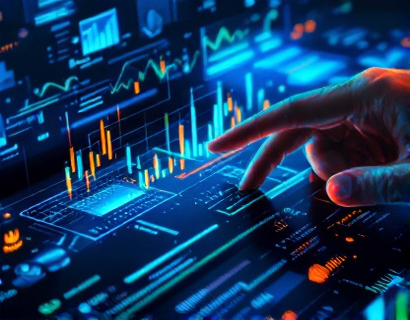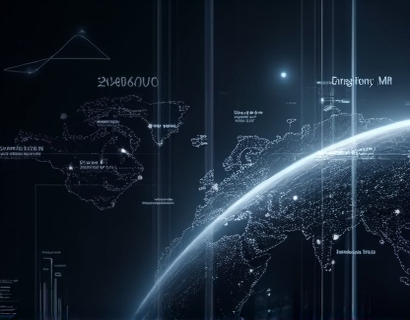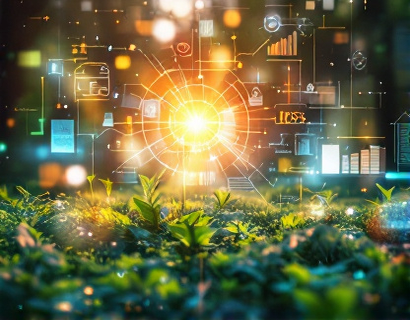Advanced Aquaponics Management Software: Streamlining Operations and Enhancing Sustainability for Optimal Farming Success
In the rapidly evolving world of sustainable agriculture, aquaponics stands out as a promising method that combines fish farming and hydroponic plant cultivation in a symbiotic environment. To maximize the potential of aquaponics, efficient management is crucial. Advanced aquaponics management software plays a pivotal role in streamlining operations, boosting productivity, and enhancing sustainability. This article delves into the features and benefits of such software, designed to transform the way aquaponics businesses operate.
Optimizing Aquaponics Operations
Aquaponics systems are complex, requiring precise control over water quality, temperature, pH levels, and nutrient concentrations to ensure the health and growth of both fish and plants. Advanced management software provides a centralized platform for monitoring and controlling these parameters in real-time. By integrating sensors and automated systems, the software ensures that all conditions remain within optimal ranges, reducing the risk of system failures and crop losses.
The software's intuitive interface allows farmers to set and adjust parameters effortlessly. For instance, it can automatically adjust pH levels by triggering dosing systems to add or remove chemicals as needed. This level of precision not only improves crop yields but also minimizes resource waste, contributing to a more sustainable operation.
Enhancing Productivity
One of the key benefits of advanced aquaponics management software is its ability to enhance productivity. By automating routine tasks, farmers can focus on higher-value activities such as system design, crop planning, and market analysis. The software can schedule feeding times for fish, monitor growth rates, and provide alerts for maintenance needs, ensuring that the system runs smoothly and efficiently.
Data analytics is another powerful feature of these platforms. By collecting and analyzing data over time, farmers can identify trends, optimize nutrient solutions, and improve overall system performance. For example, the software can track the growth rates of different plant species under various conditions, helping farmers make informed decisions about crop selection and rotation.
Promoting Sustainability
Sustainability is at the core of aquaponics, and advanced management software plays a critical role in achieving this goal. By minimizing water usage and eliminating the need for chemical fertilizers, aquaponics already offers a more sustainable alternative to traditional farming methods. The software takes this a step further by optimizing resource use and reducing waste.
For instance, the software can monitor water usage and detect leaks or inefficiencies in the system, prompting immediate action to conserve this vital resource. Additionally, by maintaining optimal conditions for both fish and plants, the software helps reduce the need for chemical treatments, promoting a healthier ecosystem. This approach not only benefits the environment but also enhances the quality and marketability of the produce.
Integration and Compatibility
Modern aquaponics management software is designed to integrate seamlessly with a variety of hardware components, ensuring a comprehensive and cohesive system. This includes compatibility with sensors for water quality monitoring, pumps for water circulation, and LED grow lights for plant cultivation. The software can communicate with these devices, adjusting settings based on real-time data to maintain optimal conditions.
Furthermore, the software can interface with external tools such as weather stations, allowing farmers to account for environmental factors that may impact the system. This integration ensures that the aquaponics system is resilient and adaptable, capable of handling external variables that could otherwise disrupt operations.
User-Friendly Dashboards
A key feature of advanced management software is its user-friendly dashboard, which provides a clear and concise overview of the system's status. Farmers can access critical information at a glance, including water quality parameters, nutrient levels, and system alerts. This visual representation makes it easier to identify issues and take corrective action promptly.
The dashboard can also display historical data and trends, providing valuable insights for long-term planning and decision-making. For example, farmers can analyze growth patterns over time to optimize crop cycles and maximize yields. This data-driven approach ensures that the aquaponics system operates at its highest potential, leading to greater productivity and sustainability.
Scalability and Flexibility
Whether you are starting a small-scale aquaponics project or managing a large commercial operation, advanced management software is scalable to meet your specific needs. The software can be tailored to accommodate different system sizes and configurations, from simple indoor setups to extensive outdoor farms.
Flexibility is another important aspect, as aquaponics systems can vary significantly based on location, climate, and specific crop requirements. The software can be customized to account for these variations, ensuring that each system operates efficiently and effectively. This adaptability makes it an invaluable tool for farmers looking to expand or modify their operations.
Environmental Impact and Regulatory Compliance
One of the most significant advantages of using advanced aquaponics management software is its positive impact on the environment. By optimizing resource use and reducing waste, these systems help minimize the ecological footprint of aquaponics farming. This aligns with the growing demand for sustainable agricultural practices and can enhance the reputation of aquaponics businesses in the market.
Additionally, the software can assist in meeting regulatory requirements related to water usage, waste management, and chemical use. By maintaining detailed records and ensuring compliance with best practices, farmers can avoid potential penalties and demonstrate their commitment to environmental stewardship. This not only protects the business but also contributes to the broader goal of sustainable agriculture.
Community and Support
Using advanced aquaponics management software often comes with access to a community of like-minded farmers and experts. This community provides a valuable resource for sharing knowledge, best practices, and troubleshooting tips. Farmers can connect with peers to discuss challenges, exchange ideas, and learn from each other's experiences.
Many software providers also offer comprehensive support services, including training sessions, technical assistance, and regular software updates. This support ensures that farmers can fully leverage the software's capabilities and stay up-to-date with the latest advancements in aquaponics technology.
Conclusion
Advanced aquaponics management software is a game-changer for farmers looking to optimize their operations, enhance productivity, and promote sustainability. By providing precise monitoring, automation, and data analytics, these tools enable farmers to create a thriving and resilient aquaponics system. As the demand for sustainable food production continues to grow, embracing this technology is essential for the future of aquaponics farming.
In conclusion, investing in advanced management software is not just a strategic move for individual farmers but a step towards a more sustainable and efficient agricultural industry. By adopting these innovative solutions, aquaponics businesses can lead the way in transforming food production for a better future.










































